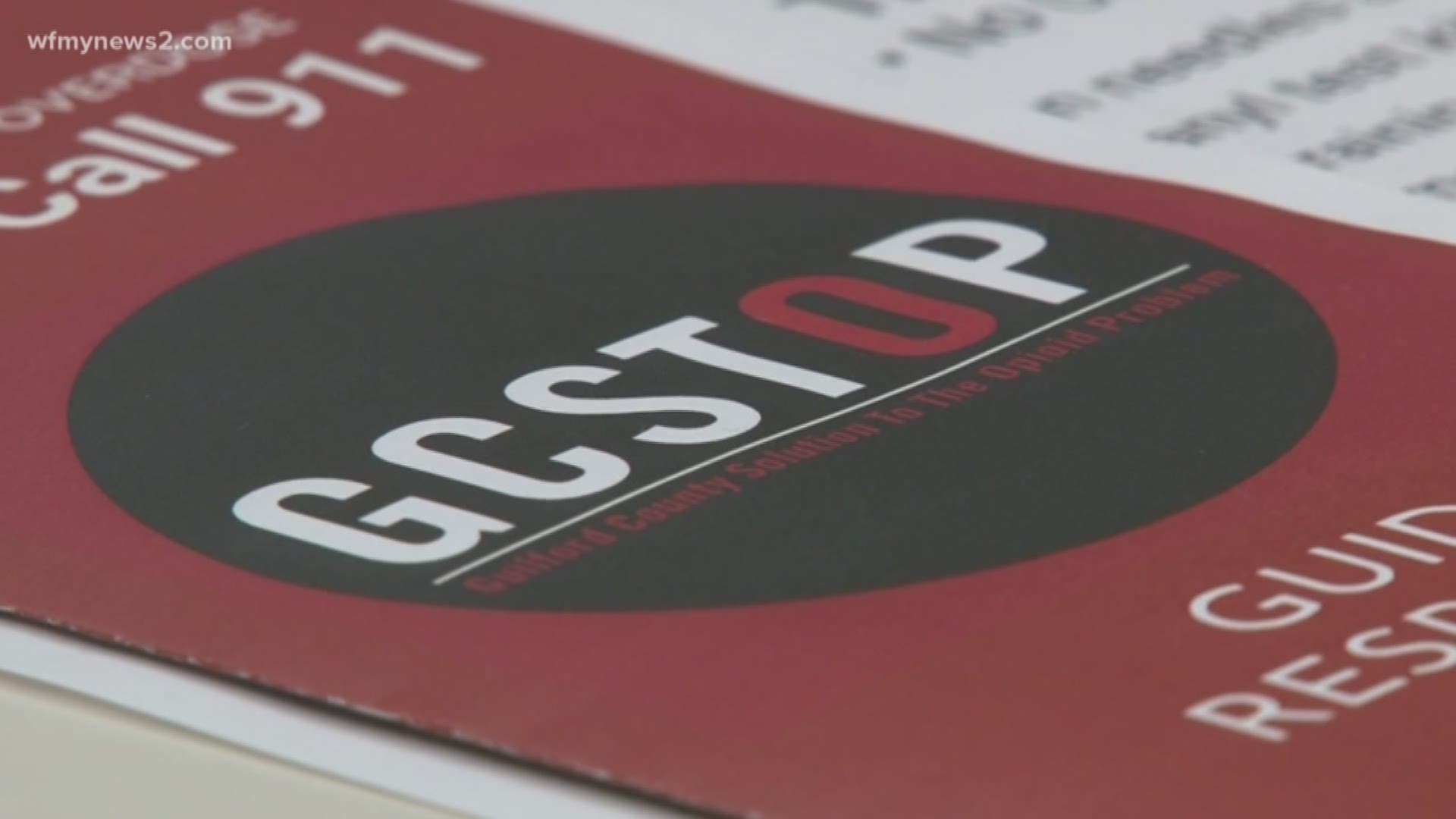GUILFORD COUNTY, North Carolina — Year after year numbers climb when it comes to overdoses in Guilford County and 2018 was no exception: EMS responded to more overdose calls than ever before.
But what's different this year is that the number of people dying from overdoses is down.
Here's a breakdown of the numbers from Guilford County EMS:
2013 -- 157 patients; 17 deaths
2014 -- 288 patients; 42 deaths
2015 -- 261 patients; 47 deaths
2016 -- 396 overdose patients; 73 deaths
2017 -- 695 overdose patients; 104 deaths
2018 -- 912 overdose patients; 79 deaths
EMS says part of the reason why is a program called GCSTOP, or Guilford County Solution To The Opioid Problem. It offers free syringe exchange, free Narcan and other help getting to treatment services for those battling drug use.
It started in March 2018 and so far they've seen success in getting people help through follow-up visits after a person has an overdose.
"It means a lot because a lot of times people want help and are waiting for help and just have no idea how to get it and we’re able to link them to treatment, link them to help and witness that positive change in their life and continue walking with them throughout their recovery," explains Rapid Response Program Navigator Chase Holleman.
Holleman says since they've started in March, they've helped connect 109 people to treatment and have given out more than 1200 doses of Narcan can help save lives.
"To put it bluntly, if people could stay alive, they can access treatment," explains Mike Yow, President and CEO of Fellowship Hall, a treatment and recovery center in Greensboro.
Yow says the months after the holidays are some of their busiest. They still have openings for treatment -- but filling the spots?
"It's maddening," he tells.
So is addiction itself. Sometimes it takes people a few attempts at recovery to finally beat it. It's a vicious cycle. but keeping people alive gives them a fighting chance.
That's why the trend in Guilford County is so important to the people helping fight the epidemic.
Guilford County EMS has also been using more naloxone, or Narcan, the overdose reversal drug. Sometimes patients are treated with more than one dose.
RELATED: EXCLUSIVE | A Night Near Death: 12 Hours In An Ambulance Tracking Overdoses With Paramedics
Here are the number of doses given out over the past few years:
2013 -- 216 doses
2014 -- 413 doses
2015 -- 413 doses
2016 -- 587 doses
2017 -- 1023 doses
2018 -- 1210 doses
To learn more about GCSTOP, you can visit their Facebook page or call 336-505-8122.
Here are some other resources:
SAMHSA’s National Helpline
The SAMHSA’s National Helpline is free, confidential, 24/7, available 365 days a year for treatment referral and information services.
Call 1-800-662-HELP (4357) or visit the online treatment locators.
National Council On Alcoholism And Drug Dependence
24 hour hotline 1-800-622-2255
More Details: National Council on Alcoholism and Drug Dependence
211 Drug Recovery Addiction Hotline
If you or someone you know has symptoms of drug addiction dial 2-1-1 from any cell phone or landline for help. This is a confidential call and you will be connected with an organization that specializes in recovery.
Another number to call 866-401-6342 is a toll free number that is available should your service provider be unable to connect to 2-1-1.
More Details: United Way Substance Abuse Addiction Services
Triad Drug Recovery Addiction Services
Call the Alcohol and Drug Services 1-855-801-9817

